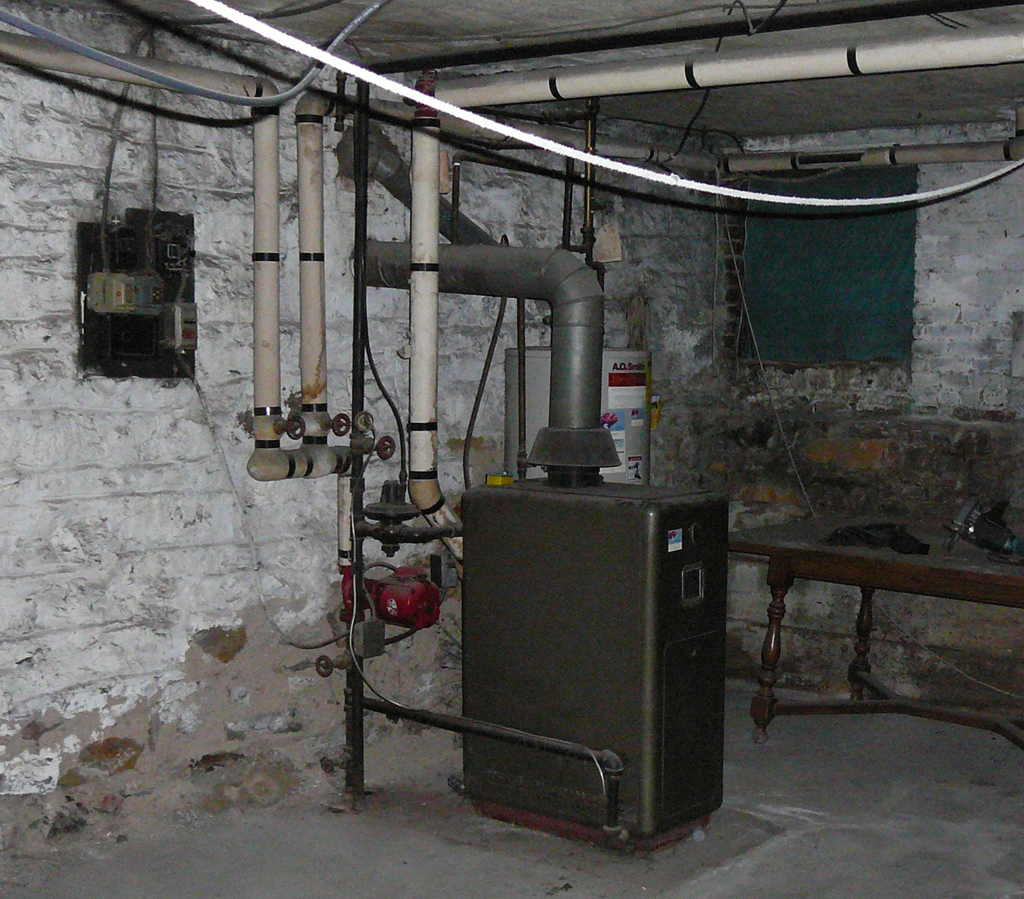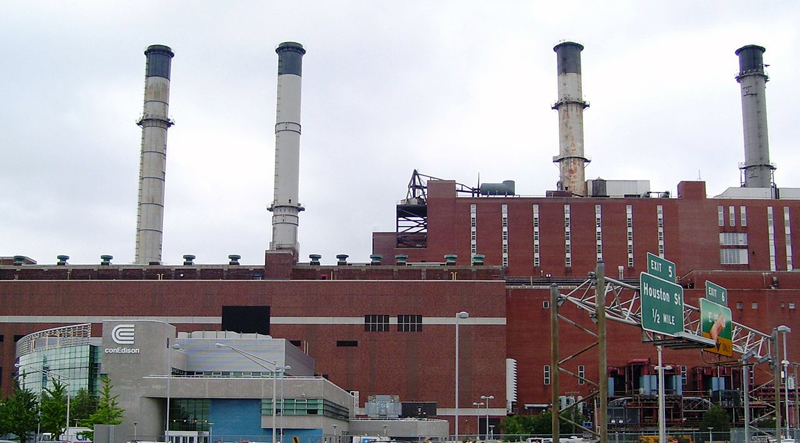
We are celebrating 15 years — and counting — of stories that are deeply researched and deeply felt, that build a historical record of what the city has been.
We are celebrating 15 years — and counting — of stories that are deeply researched and deeply felt, that build a historical record of what the city has been.
With summer upon us, it’s easy to forget the harsh winter, or the fact that many New Yorkers find their apartments overheated when their radiators are switched on. Have you ever cracked your window open in the middle of winter? If so, you probably live in a building heated by steam. According to some estimates, 60% of multifamily buildings in New York City use this 19th century technology. And while we no longer build new buildings with steam heat, the ones we have are here to stay.
Marshall Cox is an engineer who came up with a solution for the familiar problem of regulating an apartment’s temperature and turned this idea into an award-winning company at an important vanguard within green technology entrepreneurship. While most of the green tech buzz these days concerns new approaches to electricity or renewable energy, the potential of the company Cox co-founded, Radiator Labs, reminds us of the urgent need to reduce energy waste within existing systems, especially within the building stock of large, older cities of the Northeast and Midwest. While sharing this story of innovation and entrepreneurship, Cox also lets us in on the history of steam heat, and how a simple physical intervention — an insulating enclosure slipped on top of your radiator — can yield huge environmental benefits when paired with mesh networks, real-time data analysis, and a sophisticated understanding of urban infrastructure. –C.S.
What do you do?
I’m the CEO and founder of Radiator Labs, a company developing a system that fixes the inefficiencies of steam heat. You find steam heat anywhere where significant growth took place before World War II, especially in New York City. Back then, we didn’t have good water pumps or fans, so steam was the only viable way to heat large buildings.
How did you come up with the idea?
While I was getting my PhD, I lived in a steam-heated building. Keeping the apartment at a comfortable temperature was impossible. I decided to come up with a way to fix it.
The solution is simple: an insulating enclosure. Radiators create heat in two ways. They heat the air around them, and they produce infrared light. When you place our insulating enclosure over a radiator, it blocks that hot air and the light from spreading into the room. It also stores that heat in the thermal mass of the radiator, but the key idea is that the enclosure causes the air within it to heat up very fast to 100 degrees Celsius. When the air reaches that temperature, the steam inside the radiator cannot condense. More precisely, the rate of condensation equals the rate of re-evaporation, so the energy transfer becomes zero.
In simpler terms, when we put this enclosure over the radiator, we’re pushing back on how much steam is delivered to that specific radiator. And then, by coupling the insulating enclosure with a fan that can push heat out, we’re able to direct exactly as much heat as the room needs to stay comfortable. And we’re able to push the excess elsewhere in the building.
What led you to this line of work?
I studied material science and engineering, and my background is in optoelectronics, so working with materials and devices that produce or absorb light. I was developing display technologies at a company called QD Vision when the man who hired me, John Kymissis, left to become a professor of electrical engineering at Columbia. I wanted to continue to work with him, so I came to Columbia for my PhD. He specializes in integrating disparate, established technologies that are not cutting edge but, when combined, create new and awesome systems.
For example, we worked together on using LED implants in the human brain to detect and locate seizures as an alternative to the lower resolution method of implanting an electrode array in patients with severe epilepsy.
With steam and our technology, our heating system is now more versatile than any other out there.
Another project was integrating graphene — the two-dimensional form of carbon — into organic photovoltaics for solar cells. Trying to put this fragile, single-atom-thick layer onto what is basically a layer of dust was an enormous challenge. Most solar cells are still inorganic, and processing those is really power intensive. A large percentage of their cost of production comes from heating them up to refractory temperatures of 1000 degrees Celsius. But you can process organic cells from inkjet printers at room temperature. These organic materials aren’t as efficient as silicon, but if we develop them properly, they’ll be less expensive to produce.
Silicon prices are currently so low that it’s hard for organic alternatives to compete. But I think eventually we could be building football fields of organic solar cells in outer space. Building silicon cells in space would be very difficult, and launching solar cells of any kind into orbit at scale would be very difficult. The argument for organic solar cells could be the possibility to send a roll of plastic and a jug of this ink into space and build unlimited areas of solar cells through inkjet printing or other well-developed techniques.
Basically, I really liked the idea of starting companies. And so when I found myself complaining about my overheated apartment, John Kymissis and I developed the ideas that led to the founding of Radiator Labs.
How did Radiator Labs move from concept to reality?
I was able to show that the idea worked in my studio using bubble wrap, a little fan, and an Arduino board. We patented the technology through Columbia, and the university granted us a small seed fund of $15,000, which allowed us to develop the technology for an entire building. The first whole-building installations were really crude, and we learned a lot about how not to do things.
A big turning point came when we won the MIT Clean Energy Prize in 2012, which comes with $220,000 in prize money. We used those funds to create our first commercially viable version. The implementation was still crude, but we were able to demonstrate that if we installed the prototype in most radiators in one building, we could save 20% of the building heating costs. In our latest iteration we have improved the system function dramatically, demonstrating savings of 30-40% in heating costs.
So this technology can help us conserve energy?
There are two value propositions. First, there’s comfort. An individual tenant can buy the product, install it in his or her apartment, and have the same level of control over the temperature as you would with a Nest thermostat — the smart, learning thermostat that Google just acquired for $3 billion. With Nest, you’ll be comfortable, but you’ll only save energy if you live in a single or two-family home. Even if you sell it to a number of tenants of the same building in New York City, any energy savings are obscured because most New Yorkers don’t pay for energy directly. While energy costs are factored into rent, most multi-family buildings do not have submeters to measure how much energy is going into each apartment — especially with steam given how the systems are set up — so it’s impossible to divide the cost.
So our other value proposition is energy efficiency, saving the building owner — who pays the heating bill— fuel and money. For this to work, the building owner would need to deploy the technology in the majority of units.
Why are steam radiators so inefficient? Why does the system work the way it does?
Buildings before World War II used steam because we didn’t have good machinery to push hot water or air throughout a building. So the only way to heat was through convection: boiling water and letting the steam rise through the pipe.
Cracking open your window one inch has an energy loss equivalent to leaving your refrigerator wide open.
A lot of the mechanical engineering that took place in the late 19th century was focused on this problem. Those buildings were built incredibly well. And initially, they were very well balanced in terms of pipe sizing and window exposure, so the building stayed a comfortable temperature. But since then, the balance in these buildings has been lost for a number of reasons: a building is built right next door which changes the exposure, or units are subdivided. But the major change was the advent of and near universal retrofit of double pane insulating glass. Single pane glass is like a sieve; you lose heat very fast. And the heat calculations for those buildings were based heavily on the windows. So when the windows were changed to an insulating kind of glass, and one subdivided unit has one window while an adjacent unit has two windows, those two units will now need a completely different amount of energy than before. The energy demands within the building have changed, but the pipes have stayed the same. So each building has to cater to the coldest room and heat it to a minimum temperature. Every other unit gets far more energy than they want or need, and so people open their windows to compensate. These days, a building owner could invest in the most efficient windows on earth and it wouldn’t make a difference, because people are opening them in the winter.
These pipes are mostly built into masonry walls. To change them or even to convert to hydronic water systems would require tearing down the walls or building a new building. There’s nothing less sustainable than that.
Is this only an issue in cities with lots of multi-story buildings built before World War II?
Steam is found in big, older cities. New York City is the capital of steam heat: we estimate that at least 60% of our residential buildings are steam, if not more. And cities like Chicago, Boston, Buffalo, and Detroit also have a lot of steam. In European cities, because of rebuilding after World War II and heavy subsidies by governments, many of their buildings are heated by hot water. Hot water is more efficient in many ways: heat can be more evenly distributed because you can course it through a building at whatever temperature you want, preventing significant overheating.
With steam, you’re either boiling water to make steam or you’re not. So radiators are either at 100 degrees Celsius or they’re at room temperature, which makes it difficult to heat a room comfortably. Hot water buildings are easier to balance and are still being built. Steam buildings are not. We’re interested in hot water as well as steam, but the problems with hot water are far less severe and the existing solutions relatively cheap. Our first market will be retrofits for steam heat buildings.
Walk me through the components of the Cozy system.
There is the insulating enclosure. It’s very easy to install; you just place the enclosure over your radiator and plug it in. It allows us to store from half an hour to two hours of heat. We can add what’s called phase change material inside the enclosure to store enormous amounts of energy in the small volume. And then you have more energy at the point of use. The implication is that efficiency will be 100% because any heat leak is usable. No other heating technology can do that; it means the boiler has to be turned on far less often.
A thermostat controls a fan attached to a duct in the enclosure. There are two sensors: one that measures the room temperature and another that measures the radiator temperature, and then a wireless radio. So when the room is cold and the radiator is hot, the fan turns on and pushes heat into the room, and when the room heats up to whatever set point we have, the fan turns off.
The wireless radio forms what we call a mesh network through which every radiator talks to its adjacent radiator, all the way down to what we call a gateway that’s connected to the Internet. It’s very important that this system is upgradeable: we can write software updates; we can pull the data from all the radiators in real time.
One of the problems in old buildings is that the temperature is measured in maybe five rooms out of 100; so if two people open their windows in those measurement rooms, it completely changes the heating for the whole building. This year, we developed tools that sample room and radiator temperature in each unit, and use this input to model how the building heats up and cools down. We can drive the boiler based on that. Have you ever seen a movie where someone bangs on his pipe to tell the guy in the basement to turn the boiler on? That’s how it used to work. There are better, automatic, controls now, but they’re still only sampling a few apartments within big buildings. We started working with boiler control companies, taking data from every single apartment, and we use these data to signal when the boiler should be turned on and off.
If we know how much energy the building is going to need in the next hour, we can turn the boiler on exactly how much it needs to run to keep the building comfortable, and cut the wasted time. By doing that, we saw significant energy savings.
Will the individual tenant be able to set his or her own parameters for desired temperature?
Eventually. In our demonstration buildings, we set the desired temperature at 75 degrees. We are developing an app that will give every tenant the ability to set the desired temperature.
Will the choices of individual tenants be able to contribute to fuel savings?
If a tenant buys the system for an individual apartment, it will add comfort but will not necessarily save the building fuel. We have to incentivize people to keep their windows closed at a larger scale. Cracking open your window by one inch has an energy loss equivalent to leaving your refrigerator door wide open.
In terms of the energy benefits, are there economies of scale at scales beyond that of the building?
Yes. New York City has the largest district steam system in the world. ConEd has a lot of CoGen plants that pump out steam to heat buildings. There are demand charges for district steam. Buildings with district steam turn it on at 6am. In buildings with our system installed, we can shift the load from peak times to off-peak times. We can turn the boiler on at 5:30 instead of 6am, and at 6am turn off the boiler and turn on the fans. It’s called “peak shaving.” This is valuable for district steam and potentially for natural gas and any infrastructural heat source supplied through central pipes. The reason that this market does not yet exist is that no one has yet been able to store energy at the point of use.
Eventually, I think a lot of our value will be in things like peak shaving and identifying problem spots in a building. When we build the model of a building, our temperature measurements help us identify targeted retrofits. For example, maybe apartment 4C isn’t getting enough heat because of a busted air vent. Our system automates the identification of those issues. That’s the big data application of what we’re doing. We can pinpoint the problem spots and assign a dollar amount to how much money you’ll save by fixing these problems because we know exactly how much the boilers are operating to compensate for those issues.
How do you characterize your company within the larger world of green tech? What are most green tech entrepreneurs focusing on?
There are many very important issues: emissions, fuel consumption, electricity consumption, clean generation. Many people are focusing their attention on electricity. Our electrical grid is very sensitive to load that changes very fast; oscillations in the grid can destroy 10,000 transformers. Very few people are paying attention to this heating problem, because it’s not as catastrophic if someone doesn’t get heat for a few minutes. That being said, people don’t typically realize how much fuel we use to heat ourselves. We burn $5.7 billion worth of fuel to heat steam buildings in NYC, about 30% of this is wasted. Most of that loss is from people opening their windows during the winter. So we’re burning $1.7 billion of fuel unnecessarily. If our cozies were deployed citywide, we would be saving that every year.
I think fixing inefficiencies in our buildings is an incredibly important piece of what green tech can offer. The Bloomberg administration commissioned a study that found that 80% of our buildings will still be here in 2050. In the US, 11% of residential buildings are steam and hot water, and if about half of those are steam, then the 30% wasted fuel represents the largest single line item of waste in US buildings. Solving this issue would immediately reduce our dependence on foreign oil by 2%. That’s a real number.
Steam-heated buildings are here to stay. We aren’t going to tear them down just because of the steam system, which itself is not that bad. The problem is control. I would argue that with steam and our technology, our heating system is now more versatile than any other out there.
The views expressed here are those of the authors only and do not reflect the position of The Architectural League of New York.



Comments